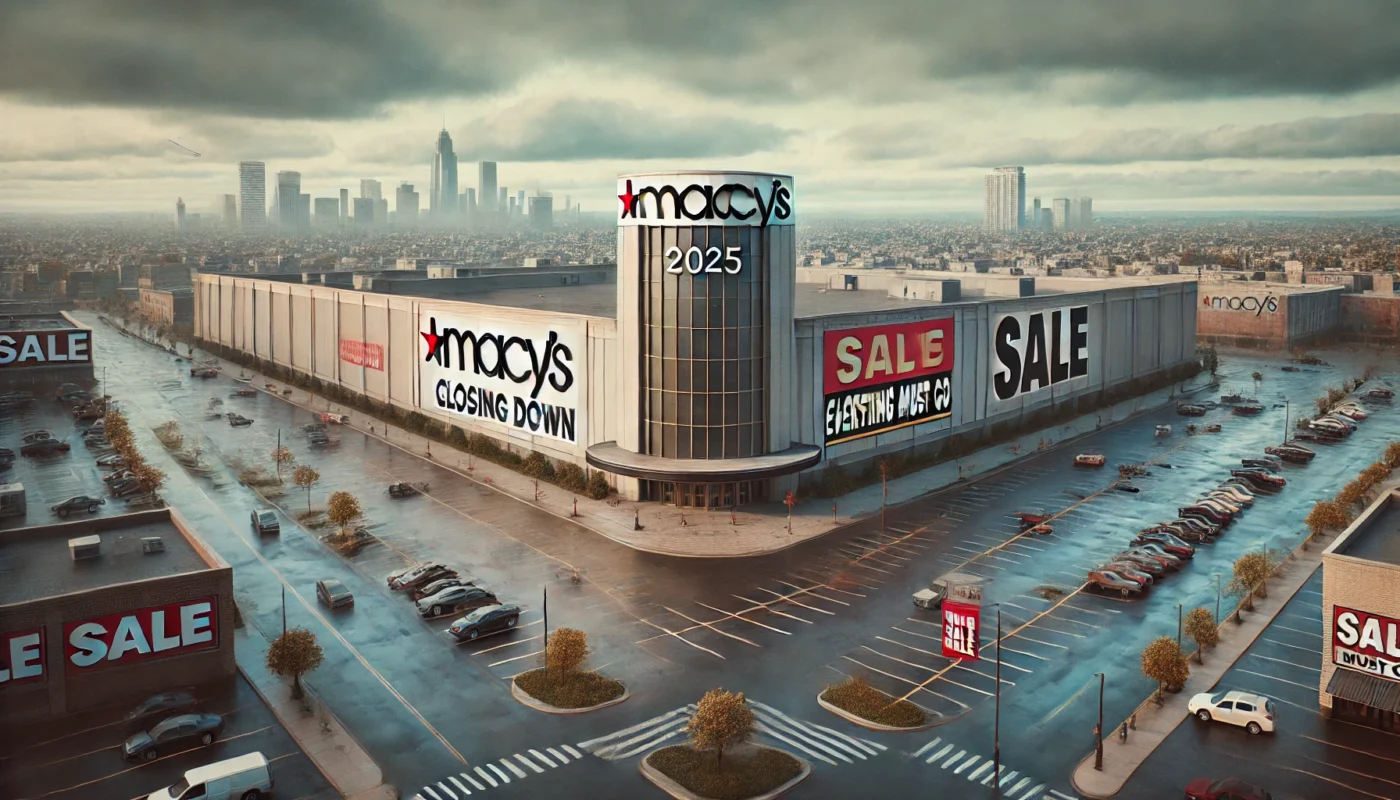In this blog post, we’ll take a deep dive into Macy’s decision, explore the reasons behind these closures, analyze their impact on local communities, and provide a comprehensive list of the affected locations. Whether you’re a loyal Macy’s shopper, a concerned community member, or simply interested in the retail industry’s evolution, this detailed post will cover everything you need to know.
Why Is Macy’s Closing More Stores?
Macy’s decision to shutter 66 more stores in 2025 is not an isolated event but part of a larger trend in retail. The company first announced its “Polaris” transformation strategy in early 2020, with the goal of optimizing its store footprint, improving profitability, and strengthening its digital presence.
Here are some of the key reasons behind this move:
1. Changing Consumer Habits
The rise of e-commerce has significantly altered the way consumers shop. Online platforms like Amazon, Target, and Macy’s own website now account for a growing share of retail sales. With more consumers opting for the convenience of online shopping, foot traffic in traditional brick-and-mortar stores has declined.
2. Over-Retailing in the U.S.
The United States has one of the highest retail square footage per capita in the world. As the retail sector undergoes a natural correction, many stores are being closed to right-size the industry. Macy’s is no exception, as the company seeks to focus on its most profitable locations.
3. Financial Challenges
While Macy’s has been able to weather some of the economic turbulence of recent years, challenges such as inflation, rising operational costs, and supply chain disruptions have pressured the company to cut costs and increase efficiency.
4. Focus on Flagship and High-Performing Stores
Macy’s is increasingly prioritizing its flagship locations and high-performing stores. The closures will allow the company to reallocate resources to these stores, as well as invest in its digital and omnichannel capabilities.
The Impact of Store Closures
While Macy’s restructuring plan may be a smart business move, it undoubtedly comes with consequences for employees, shoppers, and local economies. Here are some of the key impacts:
1. Job Losses
Store closures often lead to significant job losses. Each Macy’s store employs dozens, if not hundreds, of staff members, from sales associates to management. For affected employees, the closures can be a devastating blow.
2. Community Impact
Macy’s stores are often anchor tenants in shopping malls. Their departure can lead to a ripple effect, causing decreased foot traffic and sales for neighboring businesses. In some cases, entire malls may struggle to survive without anchor stores.
3. Limited Shopping Options
For loyal Macy’s customers, the closures may mean fewer shopping options in their area. This is particularly impactful in regions where Macy’s is one of the few department stores available.
4. Real Estate Challenges
Vacant retail spaces can be challenging to fill, particularly in smaller markets. Landlords and developers may need to get creative to repurpose these large spaces for alternative uses, such as entertainment venues, office spaces, or mixed-use developments.
The Full List of Macy’s Store Closures in 2025
Below is the complete list of the 66 Macy’s stores slated for closure in 2025. The list includes locations from coast to coast, affecting urban, suburban, and rural communities alike:
Northeast Region:
- Albany, NY (Crossgates Mall)
- Scranton, PA (Viewmont Mall)
- Boston, MA (Natick Mall)
- Hartford, CT (Westfarms Mall)
- Syracuse, NY (Destiny USA)
Southeast Region: 6. Atlanta, GA (Perimeter Mall) 7. Tampa, FL (Westshore Plaza) 8. Charlotte, NC (SouthPark Mall) 9. Miami, FL (Dadeland Mall) 10. Nashville, TN (Green Hills Mall)
Midwest Region: 11. Chicago, IL (Water Tower Place) 12. Columbus, OH (Polaris Fashion Place) 13. Minneapolis, MN (Mall of America) 14. Indianapolis, IN (Castleton Square Mall) 15. Kansas City, MO (Country Club Plaza)
Southwest Region: 16. Dallas, TX (NorthPark Center) 17. Houston, TX (Galleria) 18. Phoenix, AZ (Biltmore Fashion Park) 19. Denver, CO (Cherry Creek Mall) 20. Austin, TX (The Domain)
West Coast Region: 21. Los Angeles, CA (Century City) 22. San Francisco, CA (Union Square) 23. Portland, OR (Washington Square) 24. Seattle, WA (Bellevue Square) 25. Las Vegas, NV (Fashion Show Mall)
Note: This is a partial list. For the full list of all 66 closures, please visit Macy’s official website.
What’s Next for Macy’s?
Despite the closures, Macy’s is not retreating from retail altogether. The company is doubling down on its e-commerce operations and exploring new concepts, such as smaller-format stores and off-price outlets like Macy’s Backstage. Additionally, the brand continues to invest in its loyalty program, mobile app, and digital marketing efforts to attract and retain customers.
Macy’s CEO has emphasized that these changes are aimed at ensuring the company’s long-term success. “We understand that these decisions have a significant impact on our employees and communities,” the CEO said in a recent statement. “We are committed to supporting our team members during this transition and working with local leaders to minimize the impact on affected communities.”
How Shoppers Can Adapt
If you’re a Macy’s shopper impacted by these closures, here are some tips to adapt:
- Shop Online: Macy’s website offers a wide selection of products and often features exclusive online deals.
- Explore Nearby Stores: Check for other Macy’s locations within a reasonable driving distance.
- Try Macy’s Backstage: Visit one of Macy’s off-price outlets for discounted deals.
- Support Local Retailers: Use this as an opportunity to explore local boutiques and independent stores in your area.
Final Thoughts
Macy’s decision to close 66 more stores in 2025 reflects the ongoing transformation of the retail landscape. While these closures mark the end of an era for many communities, they also highlight the need for businesses to evolve in the face of changing consumer habits. As Macy’s continues to adapt, it will be fascinating to see how the brand reinvents itself for the future.
Stay tuned to our blog for more updates on the retail industry, including insights into store closures, emerging trends, and strategies for navigating the ever-changing shopping environment.



